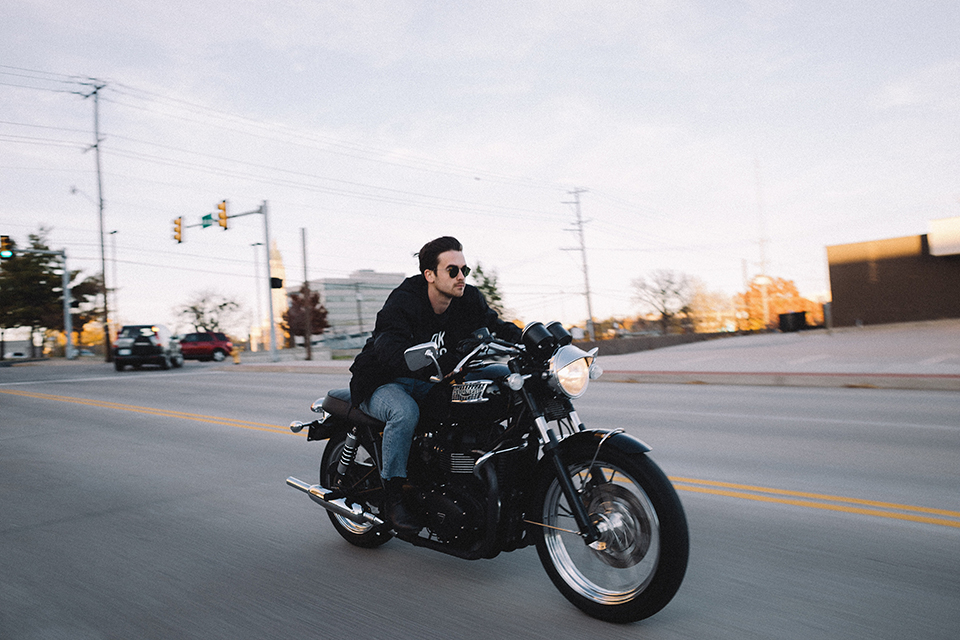
Riding a motorcycle provides an exhilarating sense of freedom but also comes with significant risks. In Albuquerque, motorcyclists are exposed to various hazards, including unpredictable weather and inattentive drivers. To ensure a safer riding experience and reduce these risks, it’s essential to adopt specific safety measures.
Seeking guidance from an Albuquerque motorcycle accident lawyer can offer additional insights into legal protections and rights for motorcyclists. However, proactive safety practices are the primary means of preventing accidents and injuries.
Wear Appropriate Safety Gear
Wearing the proper safety gear is essential for any motorcyclist. Proper gear can significantly reduce the severity of injuries in the event of an accident and enhance your visibility on the road. Here are some key pieces of safety gear you should consider:
- Helmet: The most critical piece of equipment, helmets significantly reduce the risk of head injuries. Choose a helmet that meets safety standards and fits properly for maximum protection.
- Protective Clothing: Jackets, gloves, and boots are vital for minimizing injuries from falls and collisions. These items protect against abrasions and impacts.
- High-Visibility Gear: Bright colors and reflective materials enhance your visibility to other drivers, especially in low-light conditions. This can help prevent accidents by making you more noticeable on the road.
- Proper Fit: Ensure all gear fits correctly to provide the best protection. Ill-fitting gear can be uncomfortable and may not protect as effectively.
- Quality Investment: Investing in high-quality safety gear is a small price to pay for the added protection and peace of mind it provides. Durable, well-made gear lasts longer and offers better protection in the event of an accident.
Maintain Your Motorcycle Regularly
Regular maintenance of your motorcycle is crucial for safe riding. Ensuring your bike’s brakes, tires, lights, and engine are in good working condition can prevent mechanical failures that might lead to accidents. Routine checks and servicing can help identify and fix issues before they become serious problems.
Keeping your motorcycle well-maintained also includes checking fluid levels and ensuring proper tire pressure. Well-maintained tires provide better traction and handling, which is especially important in avoiding skids and maintaining control on the road. A reliable and well-maintained bike is a safer bike.
Stay Alert and Avoid Distractions
Staying alert and focused while riding is essential for safety. Motorcyclists must be constantly aware of their surroundings, including other vehicles, pedestrians, and potential road hazards. Avoiding distractions, such as using mobile phones or adjusting your GPS while riding, can help you stay focused on the road.
Being alert also means anticipating the actions of other drivers. Defensive riding techniques, such as maintaining a safe distance from other vehicles and being prepared for sudden stops or lane changes, can help you avoid accidents. Staying vigilant and minimizing distractions are key components of safe motorcycle riding.
Understand and Follow Traffic Laws
Understanding and following traffic laws is fundamental to safe riding. Motorcyclists must adhere to the same rules of the road as other vehicles, including obeying speed limits, traffic signals, and road signs. Familiarize yourself with local traffic laws and regulations specific to motorcyclists, such as lane-splitting rules and helmet requirements.
Following traffic laws not only helps prevent accidents but also ensures that you are legally protected in the event of an incident. Compliance with traffic regulations demonstrates responsible riding and can influence the outcome of any legal claims or disputes arising from an accident.
Take a Motorcycle Safety Course
Taking a motorcycle safety course can enhance your riding skills and knowledge. These courses are designed to teach motorcyclists about safe riding practices, emergency maneuvers, and defensive driving techniques. Whether you are a beginner or an experienced rider, a safety course can provide valuable insights and improve your overall safety on the road.
Many safety courses also include practical riding sessions, allowing you to practice and refine your skills in a controlled environment. Completing a safety course can boost your confidence, improve your riding abilities, and reduce your risk of being involved in an accident.
Be Cautious in Adverse Weather Conditions
Adverse weather conditions, such as rain, fog, and wind, can significantly impact motorcycle safety. Wet or slippery roads reduce traction, making it more challenging to control your bike. To stay safe, reduce your speed, maintain a greater following distance, and avoid sudden maneuvers when riding in poor weather.
Fog and heavy rain can also reduce visibility, making it harder for you to see and be seen by other drivers. Using your headlights and wearing high-visibility gear can help improve visibility. If the weather conditions are particularly severe, consider postponing your ride until conditions improve.
Plan Your Route and Stay Informed
Planning your route in advance and staying informed about road conditions can help you avoid potential hazards. Use navigation tools and apps to check for traffic updates, road closures, and construction zones. Knowing your route ahead of time can help you navigate more confidently and avoid unexpected obstacles.
Staying informed also means being aware of any events or activities that might affect traffic, such as parades, festivals, or road races. By planning your route and staying updated on road conditions, you can make safer choices and reduce the risk of accidents during your ride.
Keep a Safe Following Distance
It is important to maintain a safe following distance to prevent accidents. When driving behind another vehicle, it is crucial to leave enough space to react to sudden stops or changes in traffic flow. The general rule is to keep a following distance of at least two seconds, which can be adjusted to three or four seconds in adverse weather conditions or heavy traffic.
A safe following distance gives you the time needed to observe and respond to the actions of the vehicle in front of you. It also provides better visibility of the road ahead, helping you to identify potential hazards earlier. By keeping a sufficient buffer zone, you can significantly reduce the risk of rear-end collisions and improve your overall safety on the road.
